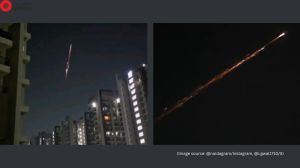Managing the nuclear deterrent
The announcement about the very first meeting of the National Command Authority more than five years after the country declared itself a nuc...

The announcement about the very first meeting of the National Command Authority more than five years after the country declared itself a nuclear weapons state would naturally raise more questions than it answers. The most crucial element of nuclear strategy is the issue of its credibility.
Transparency is a necessary element in influencing credibility. And announcements like these must be judged in that context. The timing of the present meeting, where little of actual relevance, leave alone substance, was announced, is likely to give rise to some perceptions that this was done in response to the Congress charges of the Government ignoring national security. This may carry conviction with many since the pattern of NSC meetings (that have met only twice since 1998, while the CCS takes all decisions) also give us no clue of the effectiveness of our key national security management institutions.
It appears that we are yet to deploy an operationally reliable mobile ballistic missile for nuclear delivery, and, of course, the submarine-based nuclear deterrent is many years away. Talking about the short range Prithvi missiles in this context is highly misleading. This leaves only aircraft delivery system, and we have a number of credible effective options in the shape of Su-30, Mirage-2000 and Jaguar aircraft available in service. This has been the core of our nuclear deterrent for the past five years since we announced nuclearisation.
These aircraft may not have the ranges finally required. But they would remain the core of our arsenal even after we have the full-range of ballistic missiles on land and at sea. The crux, however, is the mobile survivable ballistic missile. The deployment of an operationally reliable system in adequate numbers is yet to be announced. Such a deployment would automatically convey the signal within the country and outside that we have a credible deterrent beyond the aircraft-delivered arsenal.
But we don’t need to rush into building a large missile force, though we need to keep testing them. In fact it is time we started to pay attention to space capabilities for defence since they would have a major impact on the way we can manage not only conventional military capabilities, especially air power, but also on our nuclear deterrent.
The other issue is that of command and control. The alternate chain of command is critical to the success of any nuclear strategy. This would be the simplest and least complicated in case of a strategy of no-first-use, and by implication extremely complex and costly (and susceptible to error and risks of accidents) in case of a first-use strategy. But what we need to remember is that the chain of command would be the priority target that the adversary would seek to destroy with a nuclear strike in an effort to decapitate the arsenal, and crucial for the success of our own strategy. This must, therefore, remain the most tightly guarded secret at all times.
Secondly, in a parliamentary democracy like ours, the Prime Minister holds the authority for nuclear strike. He would designate the alternate chain in case he is incapacitated for any reason. That chain need not follow a protocol-based system.
Incidentally, it is obvious that top political and military leadership must travel in aircraft that have secure communications, command and control infrastructure and reliable fast jets to ensure that they can discharge the functions of nuclear command responsibilities properly. It is surprising, therefore, that we have not yet upgraded our transport aircraft fleet in the Air HQ Communication Squadron which continues to fly the slow obsolescent Avro of the 1960s vintage knowing that there is qualitative change in the nature of transportation and communication needs after a country goes nuclear.
Photos




- 01
- 02
- 03
- 04
- 05



























